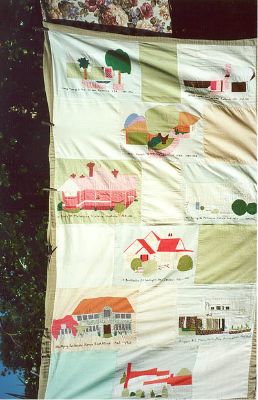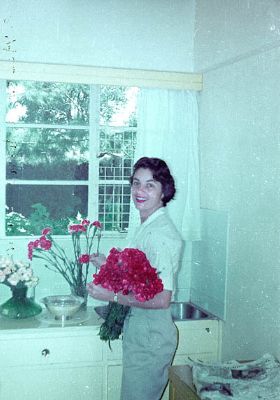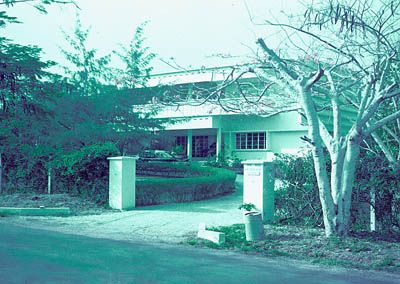Quilt No.986VD - Virginia DeFriest

Owner:
Virginia DeFriest
Location:
VIC Melbourne
Maker
Maker:
Virginia DeFriest
Made in
KENYA
Patterms
Date:
1941 - 1970
Description:
The quilt consists of 9 large rectangles each depicting a house in which the owner and her husband lived in overseas. Each house and location is identified. The houses are appliquéd and embroidered detail has been added to the houses and gardens. Plain cotton rectangles are in between the appliquéd houses. The padding is an old woollen blanket and the backing is pale green cotton percale. The quilt is tied at intervals through the 3 layers. 2180 x 490 mm
History:
The quilt was made by the present owner and is still owned by her. It is still used.
Story:
Virginia and her husband married in 1950. Her husband's work took them to many countries including Kenya, Sierra Leone, New Zealand and Ghana. Virginia appliquéd and embroidered representations of 12 of the houses in which they lived. The quilt was started in 1964 and houses were added as they moved. In 1964 it was awarded second prize in the Royal Agricultural Society of Kenya's show in Nairobi. The certificate reads "Most interesting quilt. Delightful."

Virginia DeFries about the time she made the quilt.

The house in Accra, Ghana depicted on the quilt second from the bottom on the right.
Related Quilts:
Hand sewn hexagons over paper templates in a pattern known as 'Grandmother's Flower Garden'. Materials are printed dress cottons, patterned and plain, mainly in pinks, blues and browns. The border and backing is grey linen and is machine stitched on. There is no padding. 2060 x 1579 mm.
Repeat block in Ohio star pattern. Wide border of triangles, pieced blocks and stripes. Stars are in greens, pinks, mauves (all now very faded) and white. Wreath quilting in squares with smaller wreath quilting in triangles. There is padding and the backing is a poly/cotton sheet. 2500 x 2450mm
This utility quilt is mainly constructed from long strips of cotton seed sack material. It is machine pieced and quilted by hand in a diagonal pattern. There is a red border. The backing is cotton flannelette and the padding is cotton.
1601 x 1525mm
1601 x 1525mm
All cotton hexagon quilt using a wide variety of colours and patterns. The hexagons were hand stitched by Sylvia Schleibs in the same style she and her daughter, Norma Gilchrist, had previously made 3 hexagon quilts. There is a calico border and backing.
2000 x 1450mm
2000 x 1450mm
Quilt of machine pieced squares and rectangles using a wide variety of materials in plain colours and patterns. It is one of a pair. There is no padding and the backing is 90cm strips of calico.
2500 x 2130mm
2500 x 2130mm
150mm squares of old material scraps, mostly cotton, including some curtain material. There is no padding and the backing is brown lawn.
2540 x 2370mm
2540 x 2370mm






